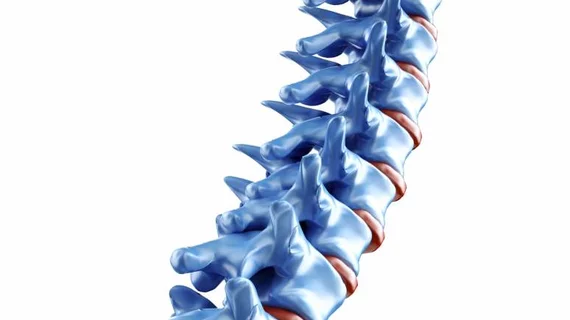New radiotracer has 'incredible potential' to improve management of spinal cord injuries
Experts have developed a radiotracer that gives providers greater insight into the severity of spinal cord injuries.
The novel PET tracer—18F-3F4AP—offers improved visualization of injured nerve fibers in the spinal cord and can identify axons that remain intact, which are indicative of recovery potential. Experts hope the information gained from their research could help providers better determine whether patients will regain mobility after sustaining an injury.
The team published their findings in the Journal of Nuclear Medicine.
“Recovery outcomes for spinal cord injuries can be highly unpredictable, and current imaging techniques don’t always provide clear answers about who might recover,” Clas Linnman, PhD, assistant professor at Spaulding Rehabilitation Hospital and Harvard Medical School in Boston, and colleagues noted. “Our study investigated whether PET imaging could detect spared nerve connections in the injured spinal cord that may indicate a better chance of recovery.”
Researchers conducted a study on rats with spinal cord contusion injuries to test the tracer’s efficacy. The rats underwent 18F-3F4AP PET imaging at multiple time points during the first month following their injury. Imaging findings were compared to autoradiography and immunohistochemistry of the subjects’ postmortem spinal cord tissue. The team also conducted a proof-of-concept analysis of two humans with spinal cord injuries of different severity.
In the rat study, experts observed a twofold increase in tracer binding at the site of the injury seven days after baseline scans were completed. Postmortem analyses of the injury site confirmed the increased uptake of the tracer.
In humans, the tracer ably differentiated between a severe spinal cord injury and an incomplete injury that had achieved substantial recovery. The team also observed alterations in tracer binding in the human participants, suggesting that blood flow to the spinal cord may differ based on injury severity. The information gained from the tracer could help to better gauge a patient's potential for recovery, the authors suggested.
The group believes their findings highlight the “incredible potential” of molecular imaging to provide invaluable new insights into neurological injuries and conditions.
“Such a tool could revolutionize how we diagnose, monitor, and understand neurological diseases, paving the way for advancements in molecular imaging and nuclear medicine,” they suggested.
Learn more about the team’s findings here.

